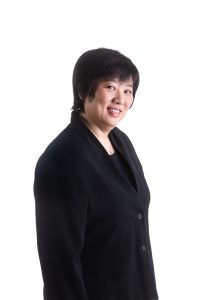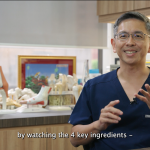
Researchers have found that 20% of normal children snore occasionally and 7-10% have habitual snoring. In many cases, children who snore are perfectly healthy. About 3% children snore because they suffer from sleep and breathing problems. The risk is higher if they have a known predisposing factor e.g. large tonsils and adenoids, obesity, nerve and muscle problems, abnormality in the jaw and face area or a family history of sleep and breathing problems. You should be aware of your child’s sleep and snoring patterns and visit a sleep specialist if you suspect something out of the ordinary.
Children who struggle to breathe while snoring may be suffering from obstructive sleep apnoea hypoventilation syndrome (OSAS). These children may snort or gasp as they snore, and may appear to “suck in the chest”. OSAS is described as breathing that starts and stops during sleep. Interruption of airflow occurs when the throat narrows or even closes during sleep.
How do I know if my child’s snoring is serious?
Sleep specialists put snoring into two categories: Primary snoring and the kind of snoring that indicates sleep apnoea . Primary snoring is “normal” and is not dangerous for your child. Primary snoring may however infrequently progress to OSAS and you should still be vigilant for signs and symptoms suggestive of OSAS. Children with OSAS may experience difficulty sleeping at night and behavioral problems during the day. Undiagnosed OSAS can lead to behavioral problems, poor school performance, delayed growth, heart failure and even death, because of decreases in blood oxygen levels. Both boys and girls can suffer from OSAS and usually have some of these things in common.
They may :
– Sleep in an unusual position with head off the bed, propped up with many pillows or sleep sitting up.
– Snore loudly and often.
– Sleep restlessly
– Stop breathing during the night for a short period followed by snorting, gasping or completely waking up.
– Sweat heavily during sleep
– Be difficult to wake up, even though it seems he or she has had enough sleep.
– Have headaches during the day, particularly in the morning.
– Be irritable, aggressive or simply “cranky”
– Have school or other behavioral problems
– Fall asleep or daydream in school or at home.
Some of these symptoms are similar to those described in children with attention deficit hyperactivity disorder (ADHD), such as trouble concentrating, hyperactivity and nervousness. If you have noticed that your child has some of the above symptoms, you should talk to your family doctor or pediatrician about referral to a child sleep specialist.
What actually happens when my child stops breathing?
Your child’s muscles are more relaxed during sleep than they are during waking hours, including the muscles used in breathing. In some children with OSAS, the throat muscles relax too much and interfere with breathing. In these cases, when the child tries to breathe, he or she experiences something like trying to slurp a drink through a floppy, wet paper straw. You may hear deep gasps as your child’s breathing starts and each gasp may awaken the child momentarily.
Anything that makes the throat more narrow or floppy can increase the risk of OSAS. This includes enlarged tonsils and adenoids, obesity, nerve and muscle problems, abnormalities in the jaw and face area and children with Down’s syndrome.
Allergies, a “stuffy nose” and acute infections of the upper respiratory tract may worsen existing OSAS but is unlikely to be the primary cause.
How do I find out for sure if my child really snores?
You should visit a sleep specialist who has experience with children to determine if your child has OSAS. The specialist will record your child’s sleep for at least one night in a special ‘sleep room’ with a test called polysomnography (PSG). This is the only way to find out if your child has OSAS or has primary snoring. During the night, various small recording devices are placed on the child’s head and body to monitor the sleep pattern and breathing. These devices record the brain waves, legs and arm movements, muscle activity, heartbeat, snoring and breathing pattern. The monitors do not pose any danger to the child, is not painful and are designed to be as comfortable as possible.
The sleep study also allows the sleep specialist to determine how serious the OSAS is, look for any associated sleep problems and to decide on the best treatment.
What are the treatment options?
Surgery :
In many children, enlarged tonsils and adenoids are the cause of OSAS and your doctor may recommend removing them. This procedure is called adenotonsillectomy. Other types of surgery, such as jaw and facial surgery may be recommended if your child has a structural problem which is causing the OSAS. Tracheotomy (opening a hole in the wind pipe at the neck) is generally used only in life threatening OSAS with no other suitable treatment available.
Sometimes surgery can stop snoring even though it does not cure OSAS. A second sleep study may be needed to be sure OSAS has been cured. Follow the advice of your sleep specialist.
Positive airway pressure (PAP) :
PAP therapy is done with a mask that fits over your child’s nose or nose and mouth connected to a machine that blows air at a pressure that keeps the airway open during sleep. PAP may be used to prepare the child before surgery and is also helpful for children when surgical treatment is not possible or desirable, or when surgery does not cure the OSAS.
Weight Loss :
If your child’s sleep specialist thinks that obesity may be contributing to your child’s OSAHS, she may recommend weight loss by means of a combined diet, exercise and behavioral program. Even if other treatments are used, weight loss in the overweight child with OSAS helps to control OSAS and sometimes lead to a cure.
Myofunctional therapy :
Myofunctional therapy strengthens muscles within the tongue, mouth and upper throat and may help some children with OSAS

Consultant Paediatrician (Asthma, Lung, Sleep & Allergy)
Book An Appointment Today!









